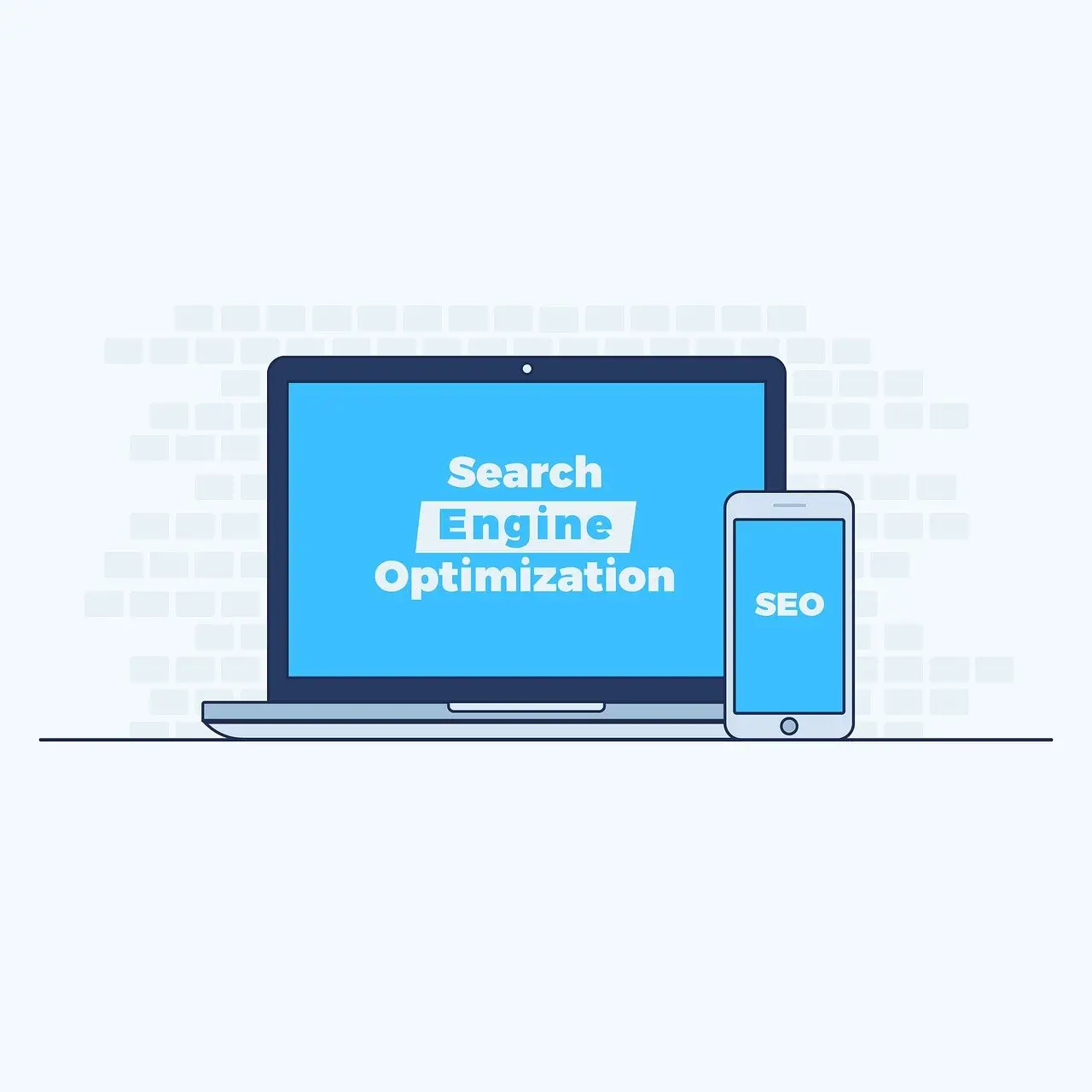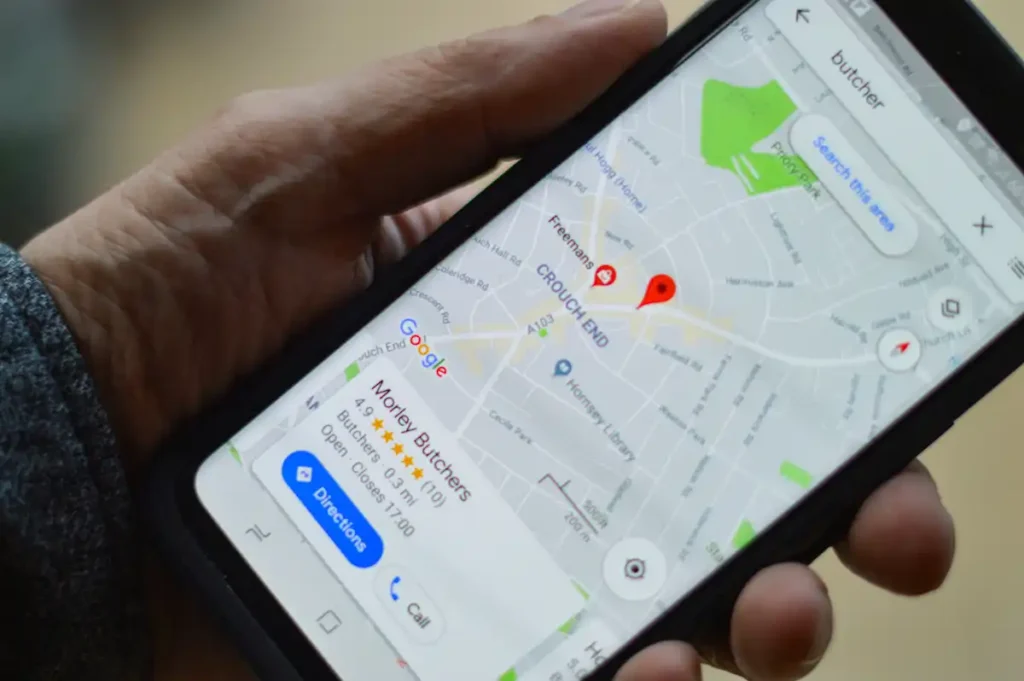Unlock the secrets of SEO basics to boost your website’s visibility and drive organic traffic your way. Start mastering simple yet effective strategies today!


“The best place to hide a dead body is page two of Google search results.” This joke makes an important point about SEO. In 2023, only 0.63% of people clicked past the first page on Google1.
Understanding SEO is key for attracting more visitors to your website. SEO stands for search engine optimisation. It involves improving your online content to rank better in search results. This way, more of your target audience finds your website.
Starting with a secure website is a great first step. Adding an SSL certificate can boost your site’s ranking2. Keywords are also vital. They connect what people search for with your website. To make your content match what users want, include your main keywords a few times in every 100 words2.
For businesses with a physical shop, having a Google My Business profile is crucial. It helps people find and learn about your business locally. Remember, SEO is about the long game. Continuous effort is what will lead to more website visitors over time1.
Keyword research is key to a strong SEO strategy. It means finding the words people use to look for products like yours. We’ll explore some essential aspects of keyword research. These insights will help boost your SEO efforts.
Keyword research helps connect with people’s online searches. It focuses on the terms they type into search engines. By understanding these terms, you can better match your content to what they seek. For example, the Semrush keyword database contains over 25.5 billion keywords3. Searching with intent in mind—like finding information, or wanting to buy something— is crucial3.
Finding valuable keywords involves looking at search volume and how hard it is to rank for them. Monthly search volume (MSV) tells you how often a term is searched. It’s a key metric to consider4. Keyword difficulty (KD%) helps you see how tough it is to rank for a keyword. High-value keywords strike a balance between these, being often searched but not super competitive3.
Google Keyword Planner is good for some insights. For more in-depth analysis, tools like the Keyword Magic Tool are very useful3.
Starting keyword research doesn’t have to be expensive. Ubersuggest gives key info for free, making it great for beginners. Semrush’s Organic Research tool can show you which keywords are being used by top-ranked websites3. Google Keyword Planner, while for paid ads, also has insights that can help. Using these free tools lays a strong ground for your SEO keyword strategy.
Without keyword research, your website may not rank well. Knowing how to find valuable keywords can make your site stand out. And with free tools, aligning your content to what visitors want becomes easier. This can turn more visits into meaningful interactions.
It’s key to get on-page SEO right if you want your website to grow. This means making different parts of your page better for people and search engines.
Optimising page titles and headers is simple and powerful for better SEO. They show search engines what your content is about5.6. Your titles should be short but clear, and use keywords to be found easier. Well-structured headings also make it easier for people to understand your content’s order6.
Alt tags describe images for search engines, helping them index your site better6. Good alt tags help search engines ‘see’ your images, which is great for SEO5. Google likes content that focuses on real people, so this step also improves the user’s experience5.
Having a website that loads quickly is important for keeping visitors and ranking higher. Tools like Google Pagespeed Insights tell you how fast your pages are and what you can do about it6.7. How fast your page loads, plus user experience and bounce rate, all affect your SEO7.
Good on-page SEO covers more than just your content. It also means making your site work well for people and search engines. Doing some simple SEO tasks can really boost how many people find your site.
Enhancing your website’s visibility and authority is crucial. Off-page SEO strategies do this beyond your website. They aim to better your search ranking outside your site’s borders. A big part of off-page SEO is gaining quality backlinks from trusted sources. These backlinks and the way visitors come to your site are key factors in your site’s reputation and visibility8.
Think of backlinks as votes from other sites, saying your content is good. Websites like Google see these votes and your Domain Authority (DA) goes up. So, getting quality backlinks can help your site rank better in search results9. To get more backlinks, try turning brand mentions into links by asking publishers. Or, offer to give expert advice to journalists, leading to links from trusted sources8.
To build good backlinks, you need a plan. A smart tactic is broken link building. You find broken backlinks on other sites and offer your content as a fix. This not only helps your site’s backlink health but also boosts your Authority Score8. Another strategy is through Digital PR. It helps you get strong backlinks and lets more people know about your brand8. Posting quality content helps you earn backlinks. This, along with engaging media and showing your expertise, helps in off-page SEO8. Guest posting and getting links from bigger sites also help spread your brand and get more quality backlinks8. Doing all this outreach is crucial, especially if you’re in a competitive market. It helps you get more links from important sites, which can boost your Domain and Page Authority9.
Social media is a big part of off-page SEO. Sharing content on platforms like Facebook, Twitter, and LinkedIn can boost your site. It can bring you more traffic and brand recognition, which are great for SEO8. Getting influencers to talk about you also helps spread your message. It increases your reach and people’s awareness of your brand, which is good for your off-page SEO work8. Social media is fun because it connects you with your audience. It makes it more likely for people to share and talk about your content.

Off-page SEO involves more than just getting backlinks and using social media. Doing podcasts lets you share your knowledge with more people. This can also bring you backlinks if your website is mentioned in the podcast notes8. Content syndication is also powerful. It means having your content shared on different platforms. By doing these varied off-page SEO activities, you can build a strong and credible online image.
| Off-Page SEO Strategy | Benefits |
|---|---|
| Backlinks from Authoritative Domains | Enhances visibility and boosts Authority Score8 |
| Broken Link Building | Improves backlink profile and site authority8 |
| Content Marketing | Earns backlinks and enhances media visibility8 |
| Digital PR | Obtains authoritative backlinks and increases brand awareness8 |
| Social Media Engagement | Increases traffic and brand visibility8 |
| Influencer Marketing | Amplifies content and drives brand recognition8 |
| Guest Posting | Expands brand exposure and attracts quality backlinks8 |
| Podcast Appearances | Reaches new audiences and showcases expertise8 |
| Content Syndication | Improves brand recognition and extends reach8 |
In the world of SEO, content rules. Google handles over 6.7 billion searches daily. This means that top-notch content is key for SEO success10. We’ll look at creating content that’s both great and relevant, understanding what users want, and why adding images or videos can help.
Developing awesome content is a must. It means making info that’s well-researched and wanted by your audience. Your content should be helpful, on-point, and interesting to get and keep users’ attention for better search results10. When you pick keywords, long-tail ones help connect your content to what people are looking for1011. Also, using a clear structure with pictures and subheadings often can spark more interest10.
Getting user intent right is crucial for content to be relevant. You have to know if users want to find something, learn, buy, or just browse11. Google prefers content that meets these needs. It likes to rank sites that help users find what they’re after10.
Pics and videos are big for making SEO better. They not only grab attention but enhance how users feel about your site. Google sees this and likes it, which can help push your content up the rankings10. Adding multimedia makes your content more interesting and further boosts its SEO value.

To wrap it up, making top-quality content that really knows what users want and includes great photos or videos makes your site a go-to. Content hugely matters in SEO, holding firm the key to a winning strategy. It pulls in more visitors and raises your site’s visibility over time.
Technical SEO goes beyond the basics. It ensures search engines can properly see your website. For newcomers to SEO, things like robots.txt and improving HTML and CSS might seem like a lot. But, learning about these areas is crucial for a site that works well and ranks high.
Robots.txt is a file that tells search engine bots where they can look on your site. It’s worth knowing that Google might not listen if you tell it to slow down when crawling. Instead, you can adjust Googlebot’s visiting rate in the Search Console12. Each website is given a crawl budget by Google, which affects how often it checks your site12. By having a tidy robots.txt, you can avoid showing Google duplicate content. This means Google will focus on indexing just the most important pages, saving you crawl budget13.

Improving your HTML and CSS is also key for technical SEO. This makes your site look good and work better. Speed is crucial for ranking well on Google, whether users are on a phone or computer. Google grades your website’s speed from 0 to 10013. Using tools like Chrome DevTools helps find and fix speed problems12. A fast site keeps visitors and boosts your search rankings, helping your SEO.
Local SEO is vital for businesses with a storefront. It helps them show up in searches by people nearby. About 46% of all internet searches are looking for something local. So, focusing on local SEO can bring more customers to your door14.
Creating a Google Business Profile is key for your local SEO. This profile shows important info like your address and phone number to anyone interested. Having a verified profile helps your business appear more in local searches. Plus, good reviews on it can win over both people and search engines1516.

Using local keywords and content on your site can improve how you rank in local searches. This strategy helps attract people nearby and makes your business more relevant in local searches14. Including things like good pictures, content about your area, and keeping your info consistent is important14. Also, creating content that appeals to your local audience can get more people to visit your store15.
Having a website that works well on mobile is a must. That’s because 61% of Google searches come from mobile devices. Searches like “near me” have gone up by 250% since 2017. So, making sure your site looks good and works on mobile is crucial. It helps you reach more people and grow your business16.
It’s also smart to check your local SEO performance often and watch how your site is doing. Tracking things like website visits, how people interact with your site, and where you show up in local searches can show you what’s working and what needs work. Acting on this info helps keep your local SEO efforts effective in the long run1416.
It’s vital for any business owner to know how to measure SEO success. Google Analytics gives you key details about your site. This includes organic traffic, what users do, and how they interact with your content. Recent studies show how important Google Analytics is for tracking SEO success. They suggest five key strategies for better use, including checking your organic traffic17.
Connecting Google Analytics with Google Search Console gives a deep look at keyword rankings17. This combination is great for keeping an eye on and adjusting your keyword plan. Remember, Google Analytics is more than just numbers. It’s about learning who your audience is and how to improve your SEO to reach them better. The “Behavior” > “Site Content” > “Landing Pages” report in Google Analytics gives detailed information on how your landing pages are performing17.
Did you know, 67% of clicks go to the first five search results? This shows how critical it is to rank well on Google18. Over 50 SEO experts in a survey said they check their SEO data weekly18. Regularly reviewing this information helps make smart SEO strategy changes. Plus, most SEOs use other tools alongside Google Analytics for a complete look at their SEO progress18.
For the best use of Google Analytics, set up specific SEO goals in the tool18. These goals might track leads from your SEO efforts or conversion rates. It’s a great way to see how your SEO is performing overall. While setting these goals up can be tricky, the benefit is worth it. By using advanced segmentation options, your business can get even more detailed insights. This helps improve your SEO plan even more17.
Google Analytics is highly praised for understanding how customers behave on your site, making it a must-have for better marketing18. It’s also key to link it with Google Search Console for clearer SEO insights18. In the end, using Google Analytics well can greatly improve your SEO game and lead to ongoing success.18
In the world of SEO, steering clear of mistakes is crucial. Common SEO mistakes can harm your website’s rank and trust. Keyword stuffing is a key error. It means using too many keywords unnaturally. This can get your site penalized by search engines. Instead, focus on using keywords in a natural way to improve your content.

Use of black hat techniques like cloaking is risky. It can lead to being removed from a search engine’s index. It’s best to avoid these shady tactics. Focus on SEO basics for a long-lasting and ethical SEO strategy. This includes not taking part in link schemes, designed to boost rankings with low-quality links. These schemes not only harm your reputation but also result in penalties.
Quality content, which is original, informative, and engaging, is key. It leads to better SEO results and keeps users on your site. Initially investing in good content saves you from troubles later. It strengthens your site’s trust with both search engines and users19. Following these guidelines helps you achieve success in the long run.
So, you’re diving into the digital world as an entrepreneur? It’s crucial to understand basic SEO principles. Getting a hold of essential SEO practices is key to successful online marketing. Begin by ensuring your website is secure, as HTTPS sites rank higher and are more trusted2. This move helps your site be seen more easily.
Understanding keyword research is an essential part of being an entrepreneur. Using the main keyword a few times per 100 words is advised2. This not only makes your content more user-centered but also boosts your ranking chances.
Improving your website’s on-page setup is critical too. This means making your site’s design and code simpler for faster loading20. Did you know, over half of mobile users leave a site if it’s too slow? That’s why making your website faster is a powerful SEO move20.
And then, there’s off-page optimisation, crucial for strong backlinks. While some backlinks come naturally, actively seeking good ones is smart2. Using tools like Ahrefs can help you find and fix weak links, keeping your site’s authority high21.
At the heart of SEO is your content strategy. Creating regular, quality content improves your keyword ranking20. Making content that your readers love is key to rising in search results21. SEO’s results aren’t instant, but with time, they become steady and reliable20. Stick with it, and you’ll see your efforts pay off.
Understanding meta tags is key to making your webpage more visible and user-friendly. They act as short summaries for search engines. These summaries include the meta description and title tag. They influence your site’s perception and rank.
A good meta description gives a quick overview of your page. It shows in search results to draw in users. Even though it doesn’t directly affect rank, a catchy description can increase clicks22. Keeping it under 160 characters and unique is best23. Tools like SERPSim are helpful for checking and improving these snippets23. Google says match your descriptions to what users are searching for23.
Title tags are crucial for SEO, showing as the headline in searches. They tell search engines about your page’s title and its content. Google recommends brief, unique title tags22. Keep them under 60 characters to avoid cutting off. Use tools like SERPSim to check and refine them23.
Using meta tags well can greatly lift your SEO game. Focus on meta descriptions and title tags for better traffic. Following these tips can make your website more noticeable, bringing in more visitors.
SEO makes your online content more visible in search results. It uses various strategies. These include finding the right keywords and improving your website’s content and links.
Start by learning the basics of SEO. This means understanding keywords and how to use them. Create quality content and use tools like Ubersuggest to find the best keywords for your site. As you learn more, you can try more advanced techniques.
Keyword research helps you understand what your audience is looking for online. It helps your site appear in more search results. This can lead to more visitors and, hopefully, more sales.
Ubersuggest and Google’s Keyword Planner are great free tools. They help you find the best keywords for your site. These tools are perfect if you’re just starting with SEO.
On-page SEO is about making your website’s pages better for search engines. You do this by adjusting things like page titles and content. It helps your pages show up higher in search results.
Alt tags describe images for people who can’t see them. They are also used by search engines. Make sure your alt tags describe the image well. Include keywords when it fits.
Backlinks are links from other websites to yours. They show Google that your site is trusted. Getting good backlinks can help your site rank higher in search results.
Good content meets your audience’s needs and has the right keywords. Use images and videos to make it more engaging. This helps both your visitors and search engines like Google like your site more.
Technical SEO is about making sure your website works well for search engines. This includes things like your site’s code and how fast it loads. It also covers making sure your website looks good on mobile devices.
For local SEO, set up and improve your Google Business Profile. Use local keywords in your content. This will help your website show up more often to people nearby.
Use Google Analytics to see how your website is doing. It shows you where your visitors come from and what they do on your site. This can help you make your SEO better over time.
Avoid using too many keywords, hiding content from users, and getting bad links. These tricks can hurt your site in the long run. Stick to honest SEO methods to better your rankings.
Meta tags are short descriptions that tell search engines what your page is about. They are shown in search results. Using meta tags well can make more people click on your site’s link.
